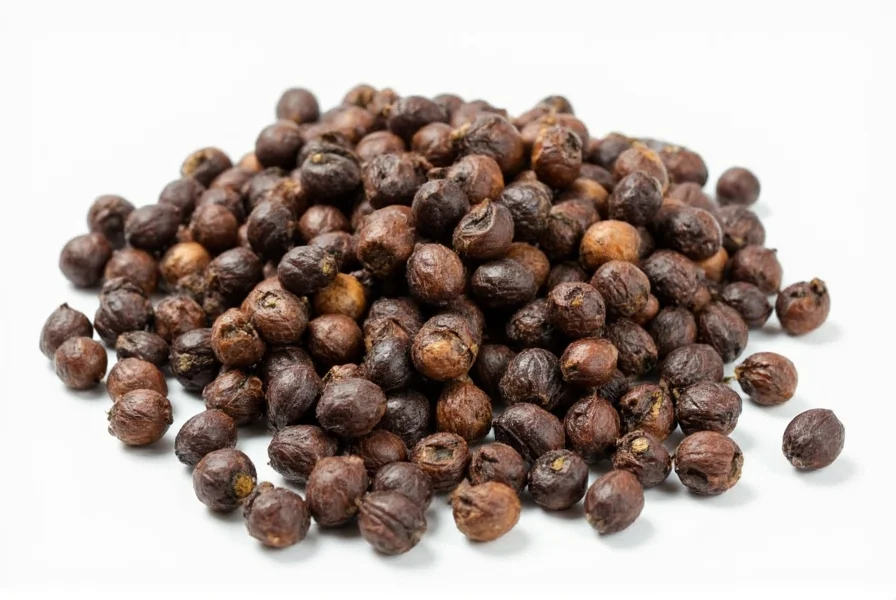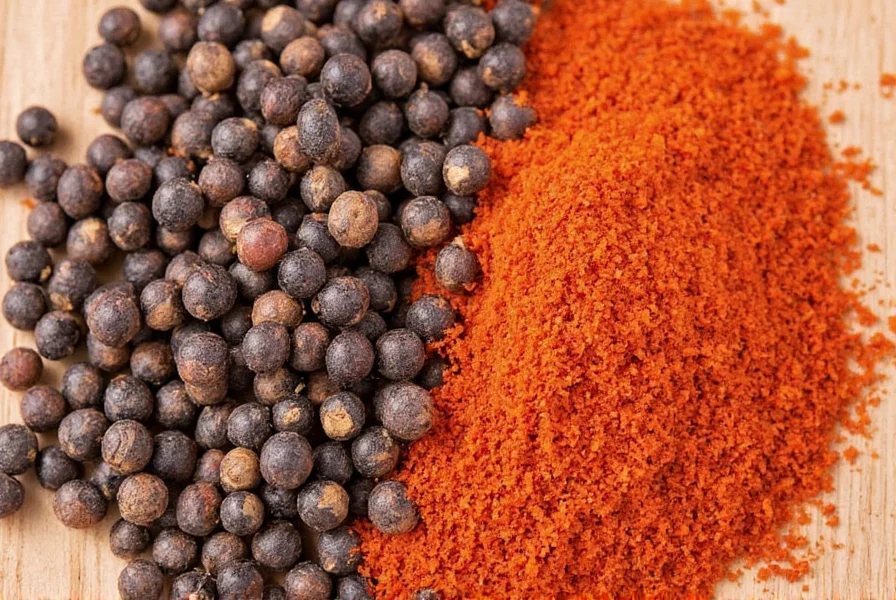If you've ever wondered why black pepper gives that distinctive kick without the fiery burn of chili peppers, the answer lies in chemistry. While many assume all spicy foods contain capsaicin, this common misconception overlooks the different biochemical pathways plants use to create heat. Black pepper (Piper nigrum) produces piperine as its primary pungent compound, whereas chili peppers generate capsaicinoids, with capsaicin being the most prominent.
The Science Behind Spicy Sensations
Understanding the difference between these compounds requires examining how they interact with our sensory system. Both piperine and capsaicin activate the TRPV1 receptor in our mouths, which is why we perceive both as "hot" or "spicy." However, they do so through different molecular mechanisms and with varying intensity.
Capsaicin creates that familiar burning sensation associated with jalapeños, habaneros, and other chili peppers. This compound binds strongly to pain receptors, creating a sensation that can linger. Piperine, by contrast, produces a sharper, more immediate heat that dissipates relatively quickly. This explains why black pepper's spiciness feels different from chili heat.
Chemical Comparison: Piperine vs. Capsaicin
| Property | Piperine (Black Pepper) | h>Capsaicin (Chili Peppers)|
|---|---|---|
| Chemical Structure | Alkaloid compound | Capsaicinoid compound |
| Scoville Heat Units | 10,000-100,000 SHU | 10,000-16,000,000 SHU |
| Heat Character | Sharp, immediate, short-lived | Burning, gradual, longer-lasting |
| Primary Plant Source | Piper nigrum (peppercorn) | Capsicum species (chili peppers) |
| Solubility | Soluble in alcohol and fats | Soluble in alcohol and fats |
Why This Distinction Matters
Knowing that black pepper doesn't contain capsaicin has practical implications for various situations:
- Cooking applications: Chefs understand that black pepper provides a different flavor profile and heat sensation than chili-based spices
- Food sensitivities: People who react negatively to capsaicin may tolerate black pepper better
- Nutritional considerations: Piperine enhances the absorption of certain nutrients like curcumin, while capsaicin has different metabolic effects
- Medical research: Scientists study these compounds separately for their distinct health properties
Common Misconceptions About Spicy Compounds
Many people assume all spicy foods contain capsaicin, but nature has evolved multiple pathways to create heat sensations. Other examples include:
- Allyl isothiocyanate: Found in wasabi and mustard, creates a nasal-focused heat
- Gingerol: The compound in ginger that provides warmth
- Shogaol: Formed when ginger is dried or cooked, more pungent than gingerol
These different compounds activate various receptors in our sensory system, explaining why wasabi's heat feels different from chili burn or black pepper's sharpness.
Practical Applications in Daily Life
Understanding that black pepper contains piperine rather than capsaicin can help you make better choices in cooking and dietary planning. For instance, if you're creating a dish for someone who can't tolerate chili heat but still wants some spice, black pepper offers a viable alternative. Similarly, when following recipes that call for "heat," knowing these distinctions helps you select the appropriate spice for the desired effect.
Food scientists have measured these compounds' relative strengths using the Scoville scale. While capsaicin can range from 10,000 to a staggering 16 million Scoville Heat Units (SHU) depending on the chili variety, piperine registers between 10,000-100,000 SHU. This explains why even extremely hot peppers like the Carolina Reaper (2,200,000 SHU) feel fundamentally different from black pepper's bite.

Health Implications of Piperine
Research suggests piperine may offer several health benefits distinct from capsaicin. Studies indicate piperine enhances the bioavailability of certain nutrients and medications, which is why black pepper is often paired with turmeric (the piperine helps your body absorb curcumin more effectively). Unlike capsaicin, which has been studied for pain relief applications, piperine shows promise for improving digestion and potentially supporting cognitive function.
However, both compounds should be consumed in moderation. While neither is harmful in culinary amounts, concentrated forms can cause irritation. People with certain digestive conditions may need to monitor their intake of both piperine and capsaicin, though reactions to each can differ significantly.

Conclusion
The question "does black pepper have capsaicin" reveals an important distinction in culinary science. Black pepper's heat comes from piperine, not capsaicin, which explains why its spiciness feels different from chili peppers. This biochemical difference affects everything from cooking techniques to potential health benefits. Understanding these distinctions helps both home cooks and professional chefs make more informed decisions about spice selection and usage.










 浙公网安备
33010002000092号
浙公网安备
33010002000092号 浙B2-20120091-4
浙B2-20120091-4